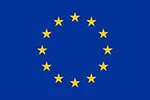2025 saw Europe’s Rail (EU-Rail) make significant progress across multiple initiatives, fostering partnerships and...


On 21 June 2024, the Governing Board of Europe’s Rail Joint Undertaking (EU-Rail) adopted a Call for Expression of Interest (CEI) with a view to selecting associated members with the potential to contribute to the achievement of its objectives. The Governing Board decision can be accessed here.
Discover detailed information about procurment rules and information.
Access detailed information about past tenders.

Europe's Rail regularly published Calls for Tenders. To find out about open Calls, follow link below.

Article 15 (Principle of transparency) of the EU-Rail financial rules states that the JU shall make available on its internet site no later than 30 June of the following financial year information on the recipients of funds deriving from its budget.
EU-Rail’s Innovation Pillar (IP) is tasked to deliver operational and technological solutions that contribute to a more efficient, flexible, and demand-led, yet safe and environmentally sustainable European railway system.
The System Pillar provides governance, resource, and outputs to support a coherent and coordinated approach to the evolution of the rail system and the development of the system view.
The Deployment Group advises the EU-Rail Governing Board on the market uptake of rail innovation developments and support their deployment.
For a successful and effective implementation of the Digital Automatic Coupler for European rail freight (DAC), it is of crucial importance to have open, close and efficient cooperation between rail stakeholders. The European DAC Delivery Programme enabled by Europe’s Rail, offers a unique European platform for such cooperation and collaboration.
Discover how Europe’s Rail Joint Undertaking is calling for a bold, coordinated investment strategy to simplify and modernise rail systems across the EU. This public-private partnership model – outlined in our High-Level Paper – proposes an €18 billion investment from 2028 to 2034 to strengthen European competitiveness, deliver greener transport, and drive technological sovereignty.

Discover detailed information on Europe's rail innovation initiatives, showcasing flagship and other projects aimed at enhancing rail systems across Europe. It highlights collaborative efforts funded by the European Union to develop sustainable, efficient, and competitive rail transport solutions.

Europe’s Rail Catalogue of Solutions illustrates successful R&I results in the form of possible products and solutions, while highlighting the benefits for final users, operators, infrastructure managers and/or suppliers. This publication also outlines the advantages of integrating demonstrators into market solutions so that they can deliver the rail innovation Capabilities of the future.
Shift2Rail is the first European rail initiative to seek focused research and innovation (R&I) and market-driven solutions by accelerating the integration of new and advanced technologies into innovative rail product solutions. Shift2Rail promotes the competitiveness of the European rail industry and meets changing EU transport needs. R&I carried out under this Horizon 2020 initiative develops the necessary technology to complete the Single European Railway Area (SERA).
Moreover, Shift2Rail has ambitious targets and a robust framework in which to meet them. Specifically, the initiative aims to double the capacity of the European rail system and increase its reliability and service quality by 50 %, all while halving life-cycle costs.
The proposed initiative helps to boost the rail supply industry’s competitive edge, introducing new market perspectives and offering significant employment and export opportunities.
The world leadership of the European railway manufacturing industry is being challenged by new market entrants, especially those from Asia offering attractive products at low acquisition costs. The best response to this competitive challenge is through innovation to improve product quality and reliability from day one by reducing life-cycle costs, combined with a railway system approach. Public and private investment in Shift2Rail also have a multiplier effect on the industry investment required to bring such products to the marketplace, and on expanding market opportunities for European industry, both in Europe and overseas. It also helps to overcome some of the present EU rail market shortcomings, namely fragmentation of production, insufficient collaboration and partnership across the rail industry, differing operating procedures among rail users, limited standardisation and low efficiency levels.
Railway undertakings, infrastructure managers and public transport operators also benefit from innovations that drastically reduce infrastructure and operating costs. This also helps to cut down on subsidies paid out by national governments — estimated at between EUR 36 billion and EUR 38 billion in Europe in 2012.
Passengers and freight service users will benefit from a step change in the reliability and quality of services. Improved competitiveness and attractiveness of rail services, combined with increased capacity, will help rail take on an increased share of transport demand, thereby contributing to the reduction of traffic congestion and CO2 emissions. Citizens’ health and well-being will also benefit, thanks to reduced noise pollution from rail.

